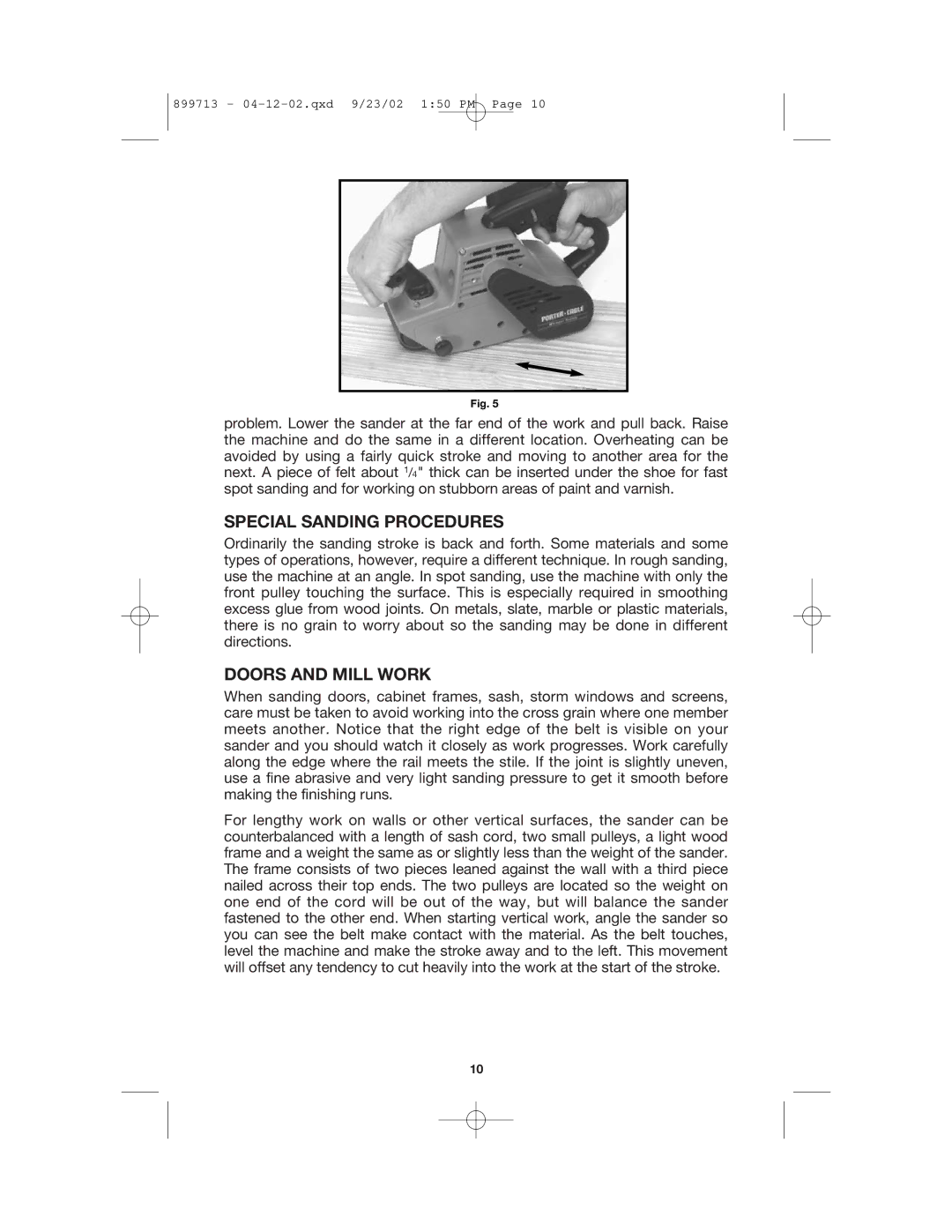
899713 -
Fig. 5
problem. Lower the sander at the far end of the work and pull back. Raise the machine and do the same in a different location. Overheating can be avoided by using a fairly quick stroke and moving to another area for the next. A piece of felt about 1/4" thick can be inserted under the shoe for fast spot sanding and for working on stubborn areas of paint and varnish.
SPECIAL SANDING PROCEDURES
Ordinarily the sanding stroke is back and forth. Some materials and some types of operations, however, require a different technique. In rough sanding, use the machine at an angle. In spot sanding, use the machine with only the front pulley touching the surface. This is especially required in smoothing excess glue from wood joints. On metals, slate, marble or plastic materials, there is no grain to worry about so the sanding may be done in different directions.
DOORS AND MILL WORK
When sanding doors, cabinet frames, sash, storm windows and screens, care must be taken to avoid working into the cross grain where one member meets another. Notice that the right edge of the belt is visible on your sander and you should watch it closely as work progresses. Work carefully along the edge where the rail meets the stile. If the joint is slightly uneven, use a fine abrasive and very light sanding pressure to get it smooth before making the finishing runs.
For lengthy work on walls or other vertical surfaces, the sander can be counterbalanced with a length of sash cord, two small pulleys, a light wood frame and a weight the same as or slightly less than the weight of the sander. The frame consists of two pieces leaned against the wall with a third piece nailed across their top ends. The two pulleys are located so the weight on one end of the cord will be out of the way, but will balance the sander fastened to the other end. When starting vertical work, angle the sander so you can see the belt make contact with the material. As the belt touches, level the machine and make the stroke away and to the left. This movement will offset any tendency to cut heavily into the work at the start of the stroke.
10
